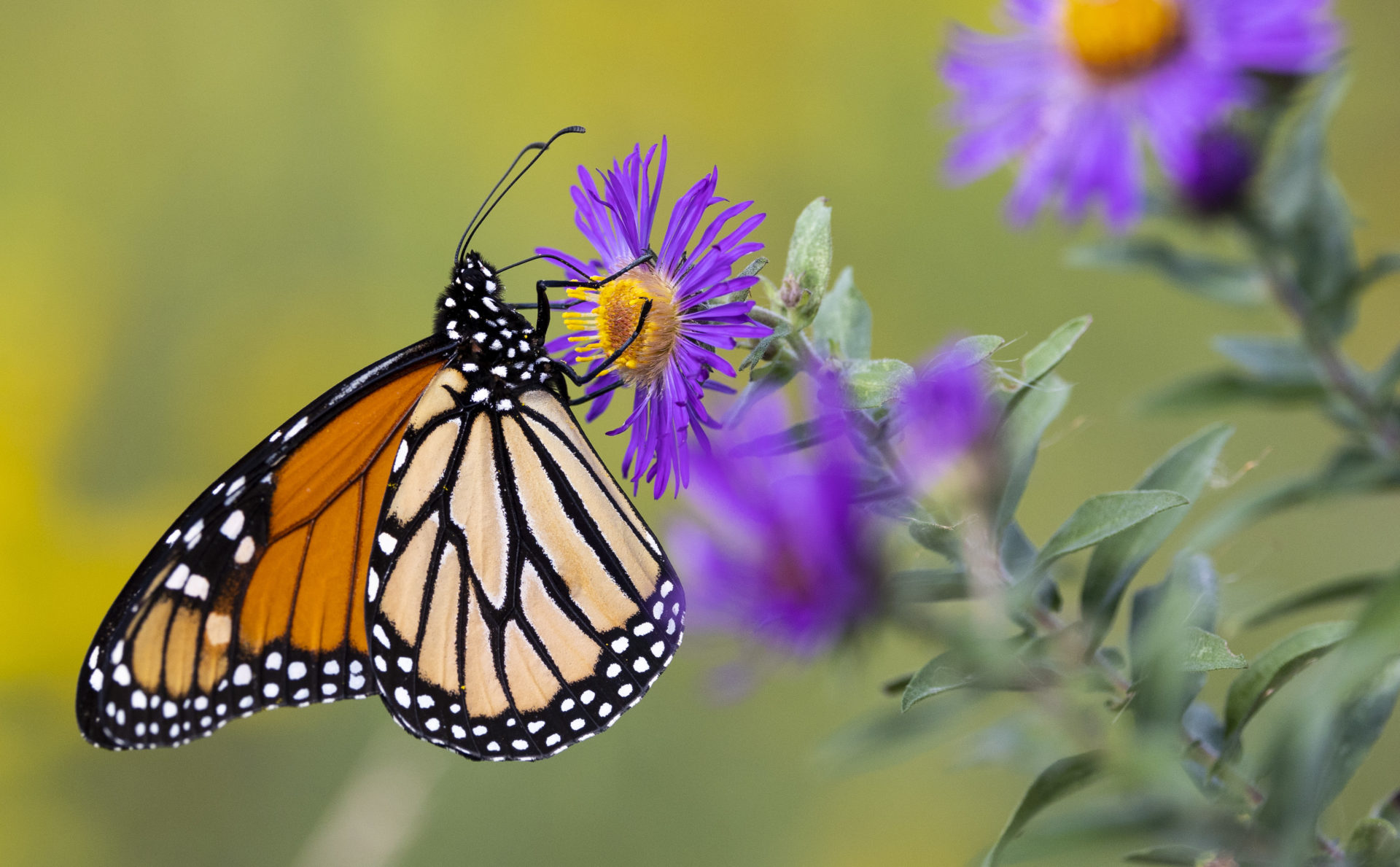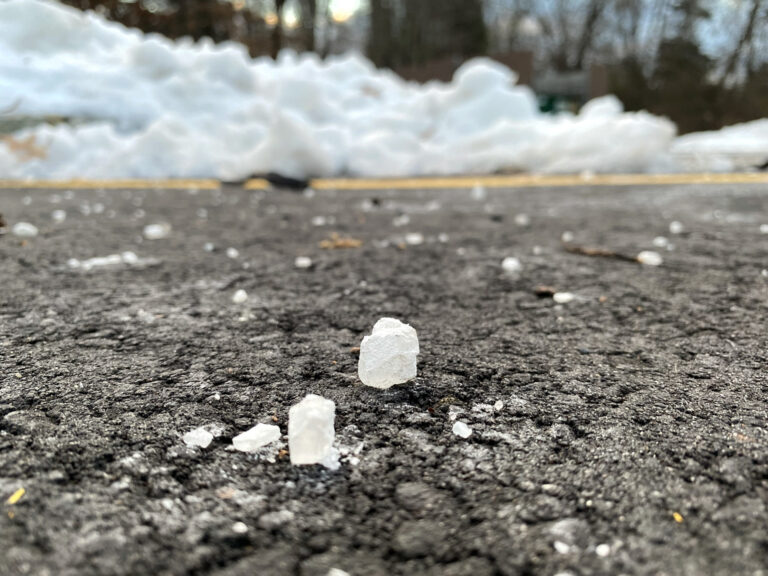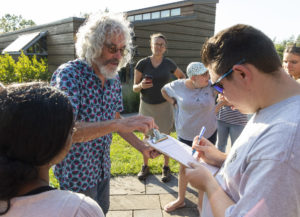
The Watershed Institute’s staff has redoubled its efforts to help the endangered monarch butterfly (Danaus plexippus plexippus) by planting new food sources, tagging monarchs migrating to Mexico, and educating people about these delicate and amazing creatures.
The International Union for Conservation of Nature (IUCN) in July classified the monarchs as an endangered species based on dwindling populations, climate changes in North America, and herbicide use that have resulted in the loss of milkweed plants essential for monarch reproduction. The World Wildlife Fund’s monitoring reports estimate that the eastern migratory monarch population has decreased by more than 80 percent during the past three decades.
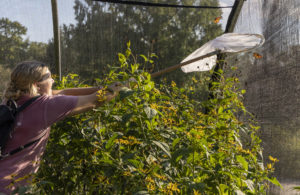
Watershed staff educate teachers, students and visitors about the monarchs, including tagging sessions. They also do public outreach by playing a game where participants learn how encounters with food sources, weather, and other variables affect the success or failure of migrations, said Pat Heaney, the Watershed’s Assistant Director of Education.
The fourth brood of monarchs travel nearly 3,000 miles from New Jersey and elsewhere in North America to overwintering destinations in Mexico. At the Monarch Butterfly Biosphere Reserve, monarchs congregate by the millions on the oyamel trees. By the start of spring, monarchs are ready to mate and migrate back to the U.S.
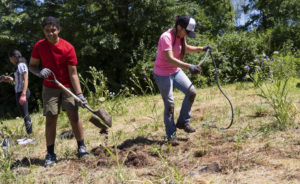
At the Watershed:
The Watershed’s stewardship staff and two interns from Princeton University planted 600 plugs of wildflowers around the Kate Gorrie Butterfly House in early July. The project was funded through the Xerces Society and plants were provided by Pinelands Nursery and Supply. The stewardship team dug and pick-axed their way through the bed of clay and shale and planted 10 species of native wildflowers – including swamp milkweed – to aid the monarch butterfly and many other pollinators. Two groups of ten Watershed volunteers, many from the Karnataka Cultural Organization- Brindavana (KCOB) in East Windsor, and other volunteers helped plant the purple coneflower, wild bergamot, yellow false indigo, lanceleaf coreopsis and other plants, said the Watershed’s Stewardship Coordinator Allison Jackson.
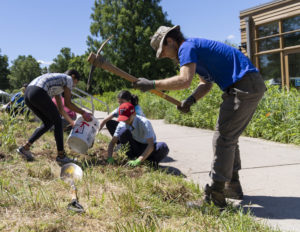
Additionally, inside the Watershed Center’s open-air courtyard, five high school summer volunteers helped Watershed staff raise caterpillars and cultivate extra milkweed plants to fuel monarchs as they grow inside of the butterfly house. These efforts are done to maximize the number of monarchs who reach adulthood during the season. The caterpillars are placed in “hotel” boxes in the Watershed’s courtyard until they reach the chrysalid stage, and then were moved to the butterfly house where visitors could see them emerge and reach adulthood. They also planted milkweed in raised beds to augment the food consumed by hungry caterpillars inside the butterfly house. Educator Vicky Allen said she intends to expand these efforts next year.
“The butterfly hotel and nursery bed were a huge success,” she said. “We had a better grasp on numbers, better health of caterpillars and butterflies. We experienced no problems with viruses, and this was a more natural, outdoor habitat.”
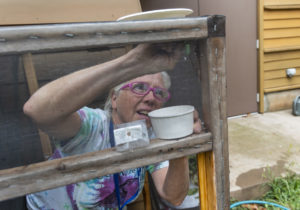
From mid-September to early October, Watershed educators worked with school children, teachers, Girl Scouts, festival goers, and other members of the public to share information about the monarchs. At home, people can help by planting native gardens with milkweeds, which is the crucial food source monarchs need to complete their life cycle.
Watershed’s Education Fellow Kate Hode was at the recent Mercer County Insect Festival with River-Friendly Coordinator Olivia Spildooren. “We had various artifacts to show what monarchs look like at each life stage, what tagging a monarch looks like and why we do it, and we had some graphics picturing the monarch’s migration paths in the fall and spring,” she said. “We also gave out milkweed seed packets and instructed visitors on how to plant them. We released monarchs every hour,” so the public could marvel at the butterflies in flight.
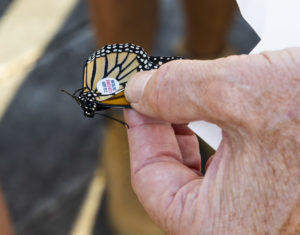
Watershed activities involve monarch tagging and information about their life cycles and migration. Visitors learn about the trials and obstacles the monarch face during migration, tour the butterfly house and learn some techniques on how to catch butterflies with nets.
Tagging butterflies involves holding monarch wings gently and placing the tags on the mitten-shaped section of their hindwing, which is known as the discal cell. This tagging method places the tag close to the center of lift and gravity for the butterfly, purposely not interfering with flight or otherwise harming the butterfly.
In the past three years, 78 monarchs were tagged by Watershed staff. The tag numbers are shared with Monarch Watch, a nonprofit educational program based at the University of Kansas. This monarch tagging program is a large-scale community science project that was initiated in 1992 to help understand the dynamics of the monarch’s spectacular fall migration. The organization creates maps and provides other information about the monarch butterfly, its habitat, and its migration.
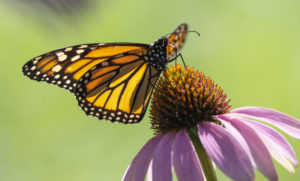
By collaborating with other nonprofit organizations, and educating the public about the endangered monarchs, there are incentives to restore, conserve and manage ecosystems for the reproduction, migration, and overwintering of this iconic species.

